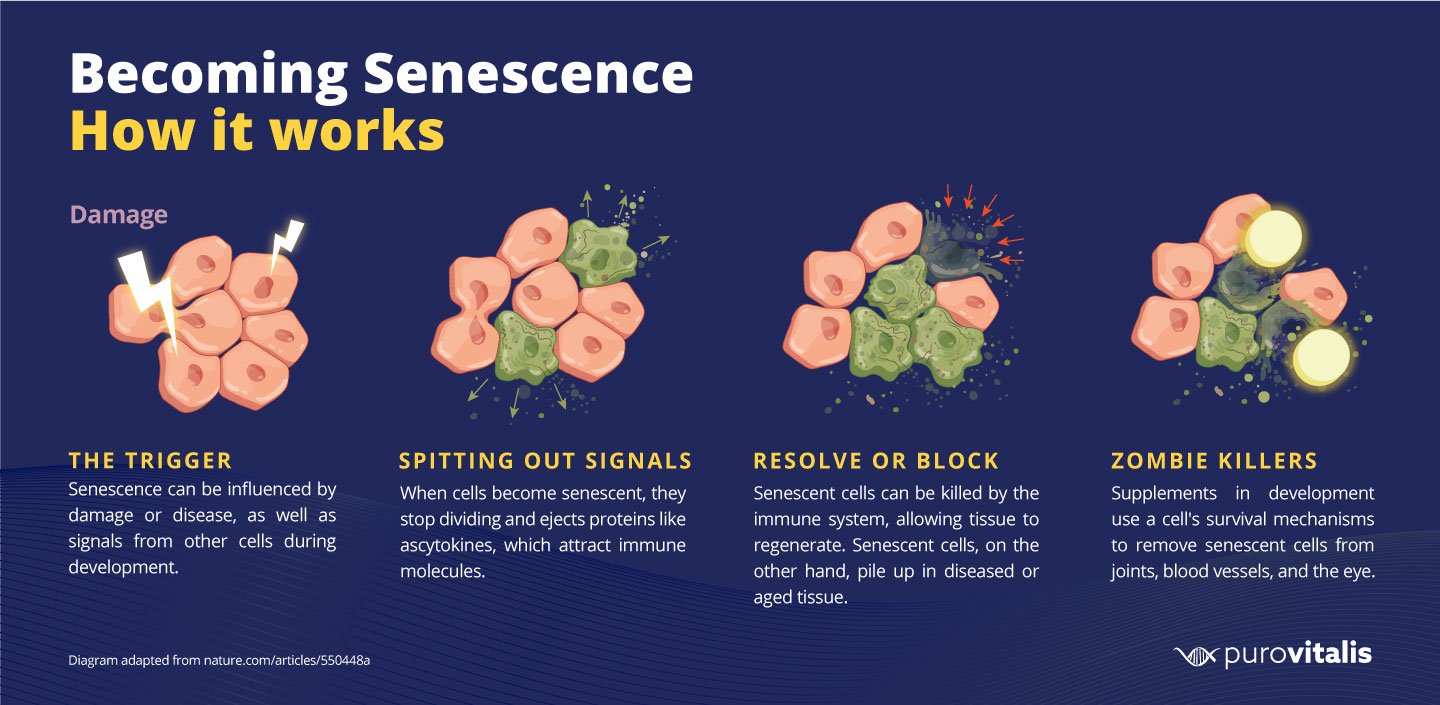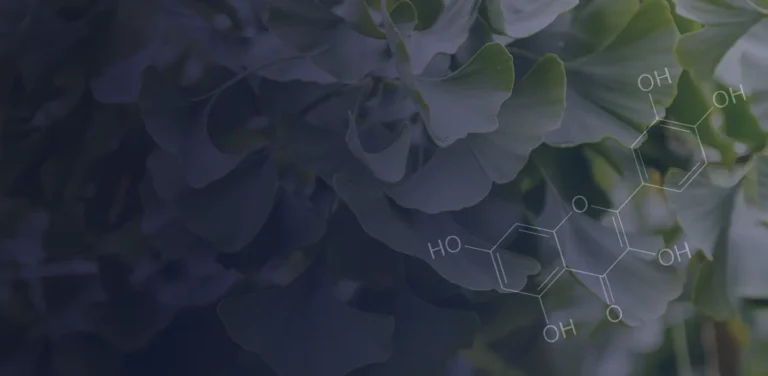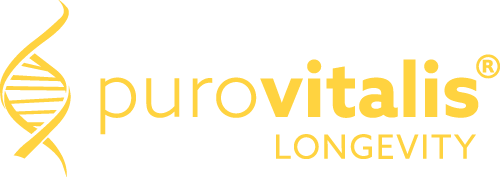
Quercetin is becoming a popular name in the world of longevity and health supplements. But what is it, and why are so many people interested in it? This guide breaks down everything about quercetin, focusing on its benefits for skin, how much to take, and what side effects it might have.
What is Quercetin?
Quercetin is a naturally occurring flavonoid, a type of plant pigment that contributes to the colors of many fruits and vegetables. Beyond its role in plant health, it offers numerous benefits to human health. It’s an antioxidant, which means it helps protect your cells against damage from free radicals – unstable molecules that can harm cellular structures. This protection is a key factor in quercetin’s health benefits.
Understanding Flavonoids
Flavonoids, such as quercetin, belong to a broader category of plant-based phytonutrients. They stand out for their antioxidant and anti-inflammatory properties. In our bodies, these compounds actively influence different metabolic processes, enhancing overall health and wellness.
Natural Sources of Quercetin
Quercetin is abundant in a variety of foods, making it easy to incorporate into your diet. Here are some of the best natural sources:
- Apples: Particularly in the skin, apples are a delicious way to get quercetin.
- Berries: Blueberries, blackberries, and other berries are rich in flavonoids.
- Grapes: Both grapes and wine, especially red varieties, contain quercetin.
- Onions: This common cooking ingredient is a surprisingly good source.
- Red Wine: In moderation, red wine offers a way to consume flavonoids.
- Green Tea: Known for its health benefits, green tea is another excellent source.
Including these foods in your diet can boost your quercetin intake, contributing to the antioxidant benefits they offer.
Quercetin Benefits
Quercetin’s health benefits are diverse and impactful. One of its most celebrated roles is in promoting skin health. As an antioxidant, quercetin helps to combat oxidative stress, which can lead to premature aging and skin damage. This action helps maintain youthful, healthy skin.
Key Benefits of Quercetin:
- Promotes Skin Health: By fighting free radicals, quercetin can reduce signs of aging and protect the skin from environmental damage.
- Reduces Inflammation: It has anti-inflammatory properties make it beneficial in reducing inflammation in various parts of the body.
- Alleviates Allergy Symptoms: It can stabilize mast cells, which helps reduce allergic reactions and symptoms.
Quercetin Benefits for Skin
Quercetin’s role in skin health is largely attributed to its antioxidant properties, which offer protection against environmental stressors and aging.
Fighting Free Radicals
- Combatting Oxidative Stress: neutralizes free radicals that can damage skin cells, leading to signs of aging.
- UV Protection: Studies suggest that quercetin may help protect the skin from the harmful effects of UV rays, reducing the risk of sun damage.
Anti-Aging Effects
- Reducing Wrinkles and Fine Lines: By combating oxidative stress, quercetin can diminish the appearance of wrinkles and fine lines.
- Enhancing Skin Elasticity: Its antioxidant action also helps in maintaining the elasticity of the skin, keeping it firm and youthful.
Skin Inflammation and Allergies
- Soothing Inflammation: Quercetin’s anti-inflammatory properties make it effective in calming skin conditions like eczema and rosacea.
- Alleviating Allergic Reactions: By stabilizing mast cells, quercetin can reduce allergic reactions on the skin, such as rashes and hives.
Quercetin could reduce symptoms of allergy
According to health experts, the anti-inflammatory properties of quercetin can also help in relieving allergy symptoms. Several animal and test-tube studies depicted that quercetin can reduce allergy symptoms by blocking histamine activity. Because this chemical plays a crucial role in promoting inflammation in the human body. Another research found that quercetin supplementation can significantly reduce peanut-related allergic reactions in mice.
The Science Behind Quercetin’s Benefits
Several studies have investigated quercetin’s effects on health. For instance, research has shown its potential in reducing the risk of certain chronic diseases, including heart disease and cancer. Its anti-inflammatory and antihistamine properties make it useful in managing allergies and asthma.

Quercetin and Senescent Cells
Senescent cells are aging cells that have stopped dividing. While they play a role in preventing cancer, their accumulation can contribute to age-related diseases and chronic inflammation.
Targeting Senescent Cells
- Reducing Senescence: Quercetin acts as a senolytic agent. This means it targets and helps remove aging cells, known as senescent cells, from the body.
- Preventing Age-Related Diseases: By reducing the number of senescent cells, quercetin may help prevent or delay age-related diseases and conditions.
Enhancing Cellular Health
- Promoting Healthy Aging: The removal of senescent cells can contribute to healthier aging, reducing the risk of various age-related conditions.
- Reducing Chronic Inflammation: Senescent cells are known to secrete inflammatory factors. Quercetin’s senolytic action can help reduce this inflammation.
Research and Development
Research in this area is ongoing. For instance, a study published in “Aging Cell” highlighted quercetin’s potential in eliminating senescent cells, thus aiding in the prevention of age-related functional decline.
Learn all you need to know about “zombie cells” or senescent cells here.
Quercetin Dosage
The effectiveness and safety of quercetin supplementation largely depend on the correct dosage, which can vary based on individual needs and health conditions.
Recommended Dosage Range
- General Health Support: Studies suggest a dosage range of 500-1000 mg per day is commonly used for general health benefits, including antioxidant support.
- Allergy Relief: For allergies, doses of around 400-500 mg taken twice daily have been found effective in some studies.
- Cardiovascular Health: Research indicates that 150-500 mg per day may be beneficial for heart health.
- Skin Health: To improve skin health and protect against UV damage, dosages between 500-1000 mg per day are often recommended.
Factors Influencing Dosage
- Individual Health Needs: Goals like reducing inflammation or managing allergies can determine the necessary dosage.
- Age and Gender: Dosages may need to be adjusted for different age groups and genders, reflecting their unique metabolic and physiological profiles.
- Specific Health Conditions: Conditions like cardiovascular diseases or inflammatory disorders may require tailored dosages for optimal effectiveness.
Scientific References
- A study in the “European Journal of Clinical Nutrition” highlights the pharmacokinetics of quercetin, indicating its absorption and metabolism are dose-dependent.
- Research on the efficacy of quercetin for allergy relief, published in journals like “Molecules,” often explores dosages around 400-500 mg twice daily.
- Studies on cardiovascular benefits, such as those in the “Journal of Nutrition,” have examined the effects of quercetin at doses ranging from 150-500 mg per day.
- For skin health, research available in dermatological publications like the “Journal of Clinical and Aesthetic Dermatology” has considered doses up to 1000 mg daily.
It’s crucial to note that while these dosages are based on scientific research, individual requirements may vary. Consulting with a healthcare provider is recommended to determine the most appropriate dosage based on personal health needs and conditions.
How Long Does It Take for Quercetin to Work?
The time it takes to experience the benefits of quercetin can vary based on individual factors and the specific health concern being addressed.
Typical Timeline for Effects
- Short-term Benefits: Some effects, like allergy relief, may be noticeable within days to weeks of starting supplementation.
- Long-term Health Improvements: Benefits like improved skin health or reduced inflammation might take longer, often several weeks to months.
When to Take Quercetin
The timing of quercetin supplementation can impact its effectiveness.
Best Times for Consumption
- With Meals: Taking quercetin with food, especially those containing fat, may enhance its absorption.
- Consistent Daily Intake: Regular intake is crucial for sustained benefits. Morning or evening routines can be established based on personal convenience and digestive comfort.
Quercetin Side Effects
Most people tolerate quercetin well. However, like all supplements, it may cause side effects in some individuals.
Potential Side Effects
- Headaches: Particularly at higher doses.
- Nausea: This may occur if quercetin is taken on an empty stomach.
- Tingling Sensations: Rare, but possible, especially with high doses or long-term use.
Read our extended article on Quercetin and Thyroid.
Is Quercetin Safe?
For most people, quercetin is safe when consumed in food quantities or taken as a supplement in recommended doses.
Recommendations for Safe Use
- Consult a Healthcare Professional: Before starting, especially if you have pre-existing health conditions or are taking other medications.
- Follow Recommended Dosages: Exceeding the recommended dosage can increase the risk of side effects.
Bioavailability of Quercetin
The effectiveness of quercetin hinges on its bioavailability. This term refers to how much quercetin the body can absorb and use. The better the bioavailability, the more effective quercetin will be.
Understanding Bioavailability
- Low Bioavailability: Quercetin doesn’t absorb well in our bodies. This happens because it dissolves poorly and the body breaks it down quickly.
- Improving Absorption: The form in which quercetin is consumed can significantly affect its absorption rate.
Different forms
- Capsules: Often combined with other substances to enhance absorption.
- Powders: Can be mixed with liquids; the absorption can vary based on the specific formulation.
- Rich Foods: Natural sources may offer better absorption due to the presence of other complementary nutrients.
- Liposomal Form: This advanced form encapsulates quercetin in a lipid layer, improving its solubility and absorption.
Quercetin vs CoQ10
Coenzyme Q10 (CoQ10) and Quercetin are both powerful supplements, but they serve different purposes.
Quercetin
- Skin Health: Excellent for combating oxidative stress and inflammation in the skin.
- Allergy and Inflammation Relief: Beneficial in managing allergies and inflammatory conditions.
CoQ10
- Energy Boosting: CoQ10 plays a crucial role in cellular energy production.
- Heart Health: Known to benefit heart health and mitochondrial function.
Both supplements, while distinct in their primary benefits, can complement each other in a holistic health regimen. Quercetin’s anti-inflammatory and antioxidant properties, combined with CoQ10’s energy-boosting and heart health benefits, offer a comprehensive approach to wellness.
Resveratrol with Quercetin
The combination of resveratrol and quercetin can enhance the health benefits of each, offering a synergistic effect.
Antioxidant Benefits
- Resveratrol: Known for its anti-aging and cardioprotective properties, resveratrol is another powerful antioxidant. It’s found in grapes, red wine, and berries, and is known for its ability to activate pathways in the body that contribute to longevity.
- Synergy with Quercetin: When combined, resveratrol and quercetin can offer enhanced protection against oxidative stress. This synergy can be particularly effective in combating aging, reducing inflammation, and supporting cardiovascular health.
Synergistic Effects
- Complementary Actions: The two compounds may work together to amplify each other’s effects. For instance, while quercetin stabilizes mast cells, resveratrol can activate sirtuins, a group of proteins linked to aging and longevity.
- Broader Health Impacts: The combination can potentially offer broader health impacts, such as improved vascular health, enhanced cellular function, and a stronger defense against age-related diseases.
You may also be interested in the benefits of Quercertin and Zinc when paired together.
Conclusion
Quercetin is a versatile and powerful supplement, particularly beneficial for skin health and managing inflammation. Its effectiveness can be influenced by its form and bioavailability. For those interested in exploring the benefits of quercetin, Purovitalis offers a range of supplements, including innovative formulations designed to maximize its bioavailability and efficacy. It’s always wise to talk to a healthcare professional before starting any supplement, including quercetin. They can offer personalized advice tailored to your needs.
References
- Inflammation, and Immunity: This study discusses the role of quercetin in modulating inflammation and immune function.
- Sources and Bioactivities of Quercetin: An overview of natural sources of quercetin and its various health benefits.
- Cardiovascular Health:This research explores the impact of quercetin on cardiovascular health.
- Antioxidant and Anti-Inflammatory Activities: A comprehensive look at the antioxidant and anti-inflammatory properties of quercetin.
- Dose-Dependent Pharmacokinetics: This research helps us understand the best ways to use quercetin effectively.
- UV Protection: Research on quercetin’s effectiveness in protecting skin against UV-induced damage.
- Senolytic Agent: Studies highlighting it’s potential in eliminating senescent cells, aiding in the prevention of age-related functional decline.
- Improving the Bioavailability: Research articles on methods to increase the bioavailability.
- https://pubmed.ncbi.nlm.nih.gov/28620474/
- https://pubmed.ncbi.nlm.nih.gov/18417116/
- https://pubmed.ncbi.nlm.nih.gov/23675073/
- https://pubmed.ncbi.nlm.nih.gov/18827577/
- https://pubmed.ncbi.nlm.nih.gov/23044824/
- https://pubmed.ncbi.nlm.nih.gov/27710596/
- https://pubmed.ncbi.nlm.nih.gov/27187333/
- https://www.spandidos-publications.com/or/33/6/2659
- https://pubmed.ncbi.nlm.nih.gov/27479153/
- https://pubmed.ncbi.nlm.nih.gov/11063442/
- https://pubmed.ncbi.nlm.nih.gov/29127724/

premium supplements Liposomal Technology made in EU Third party lab tested
Experience life to its fullest because you deserve the best! Try Purovitalis supplements!








